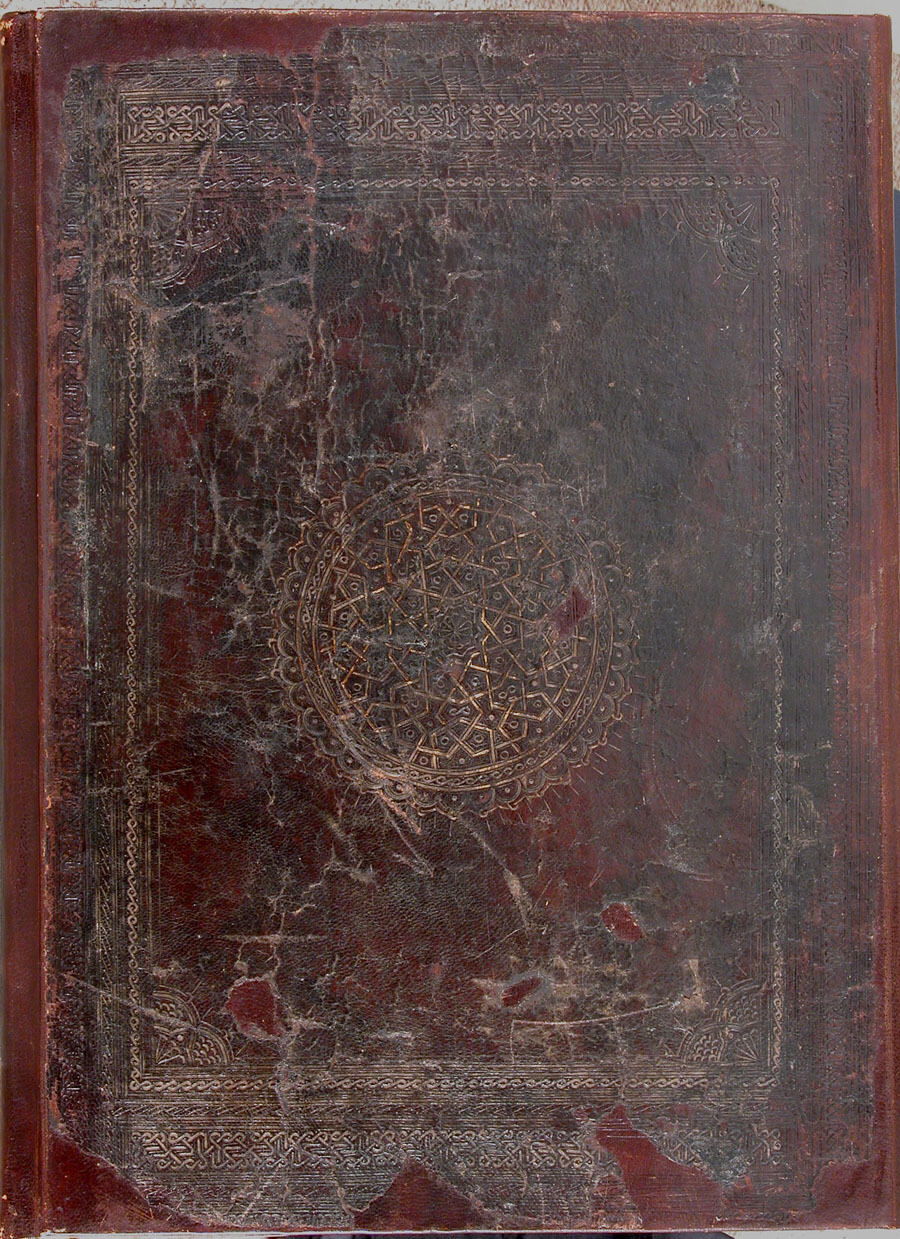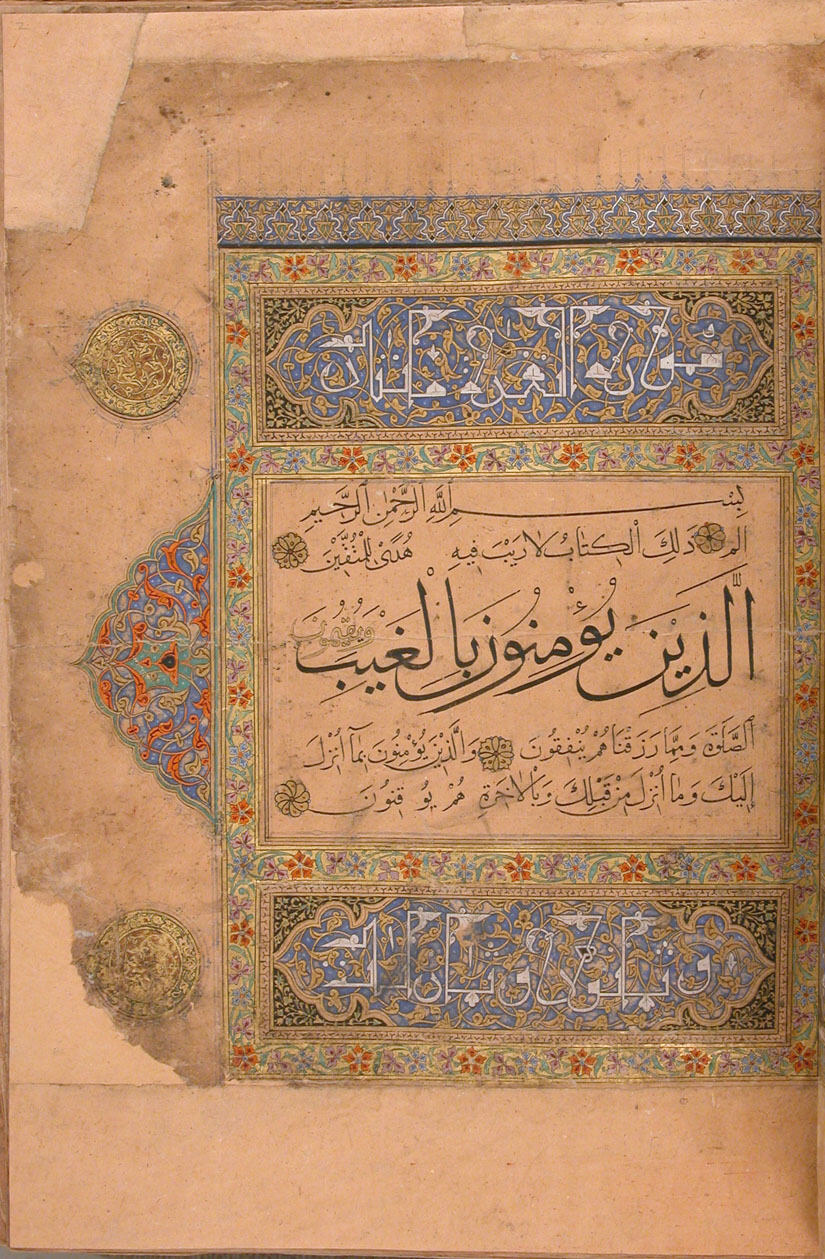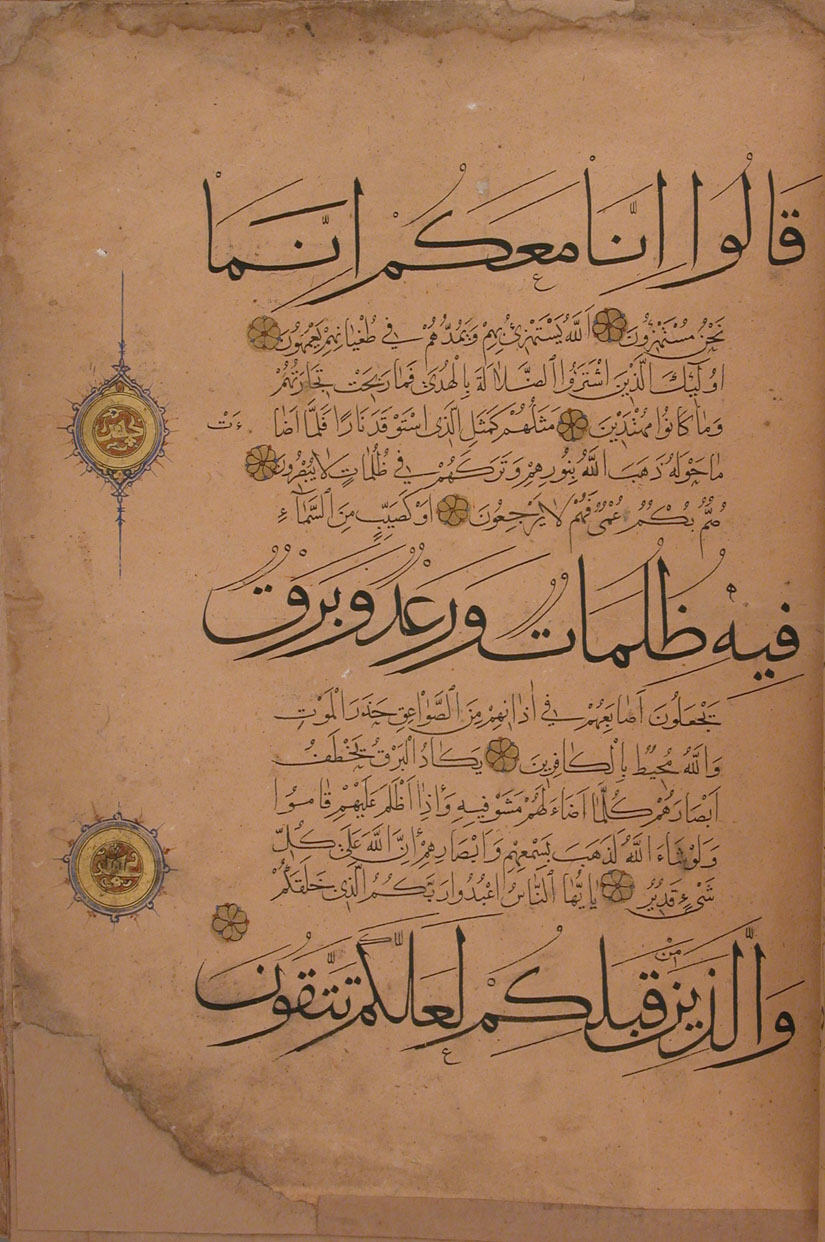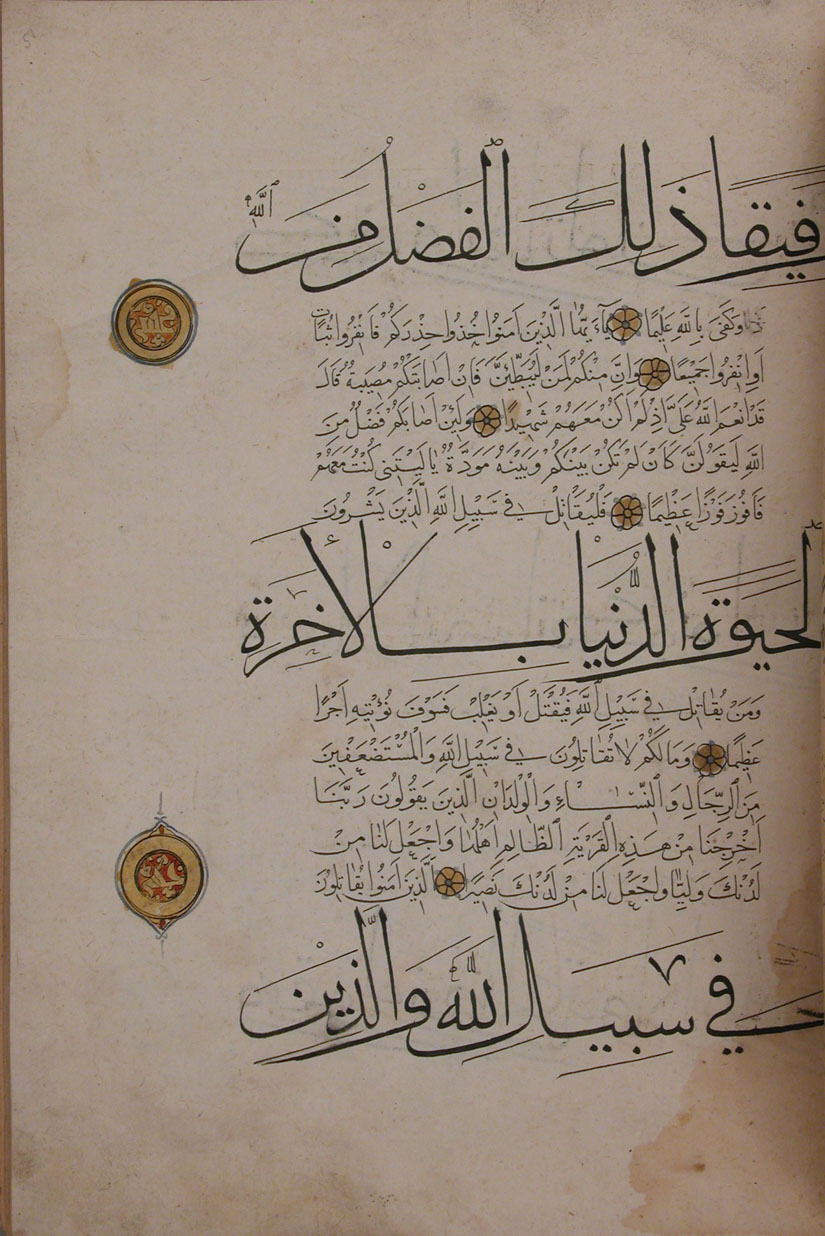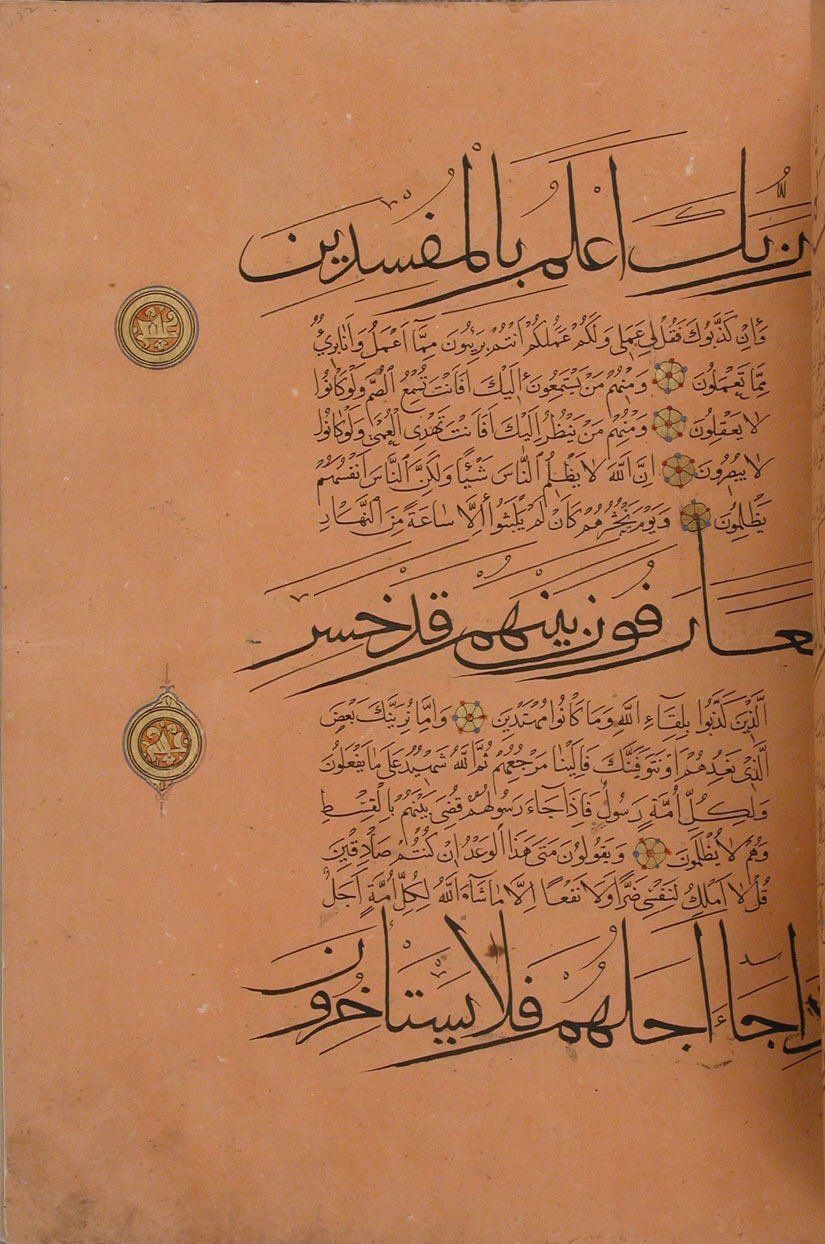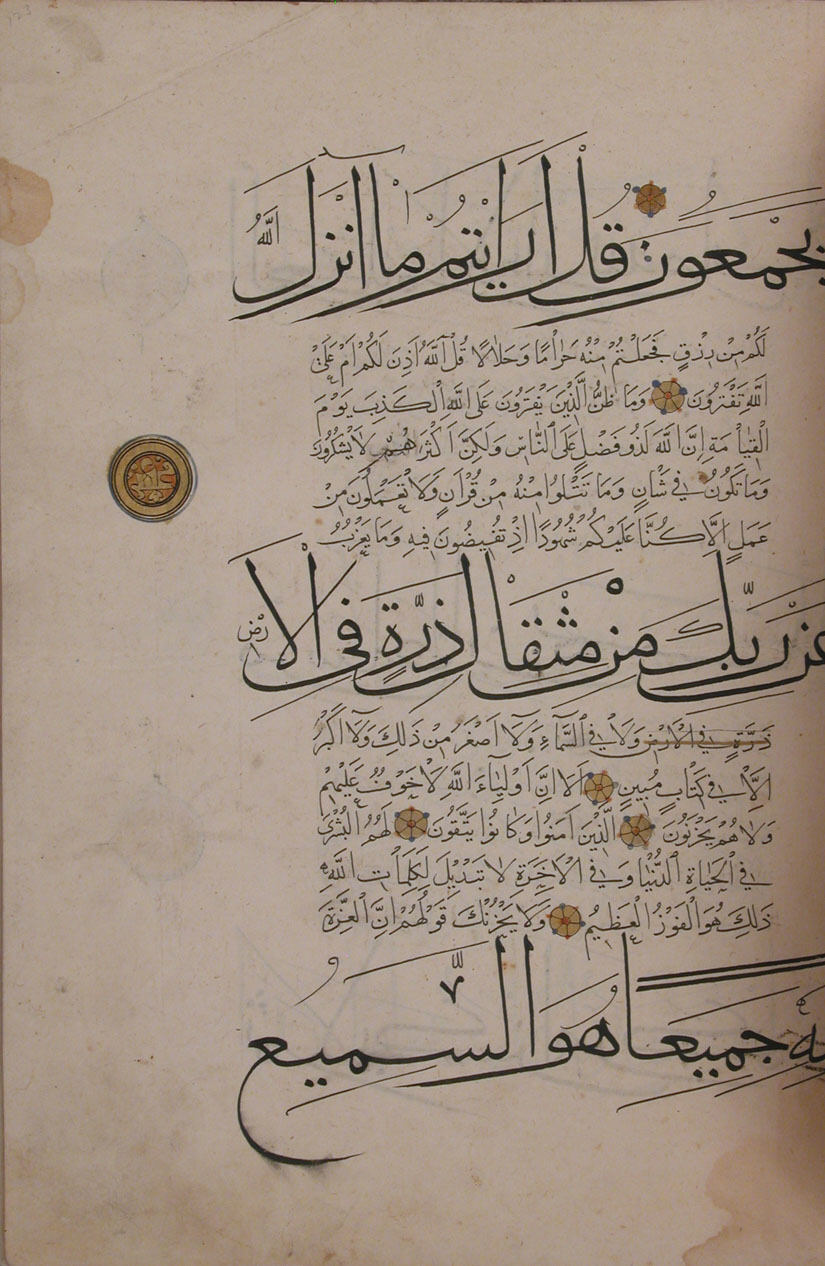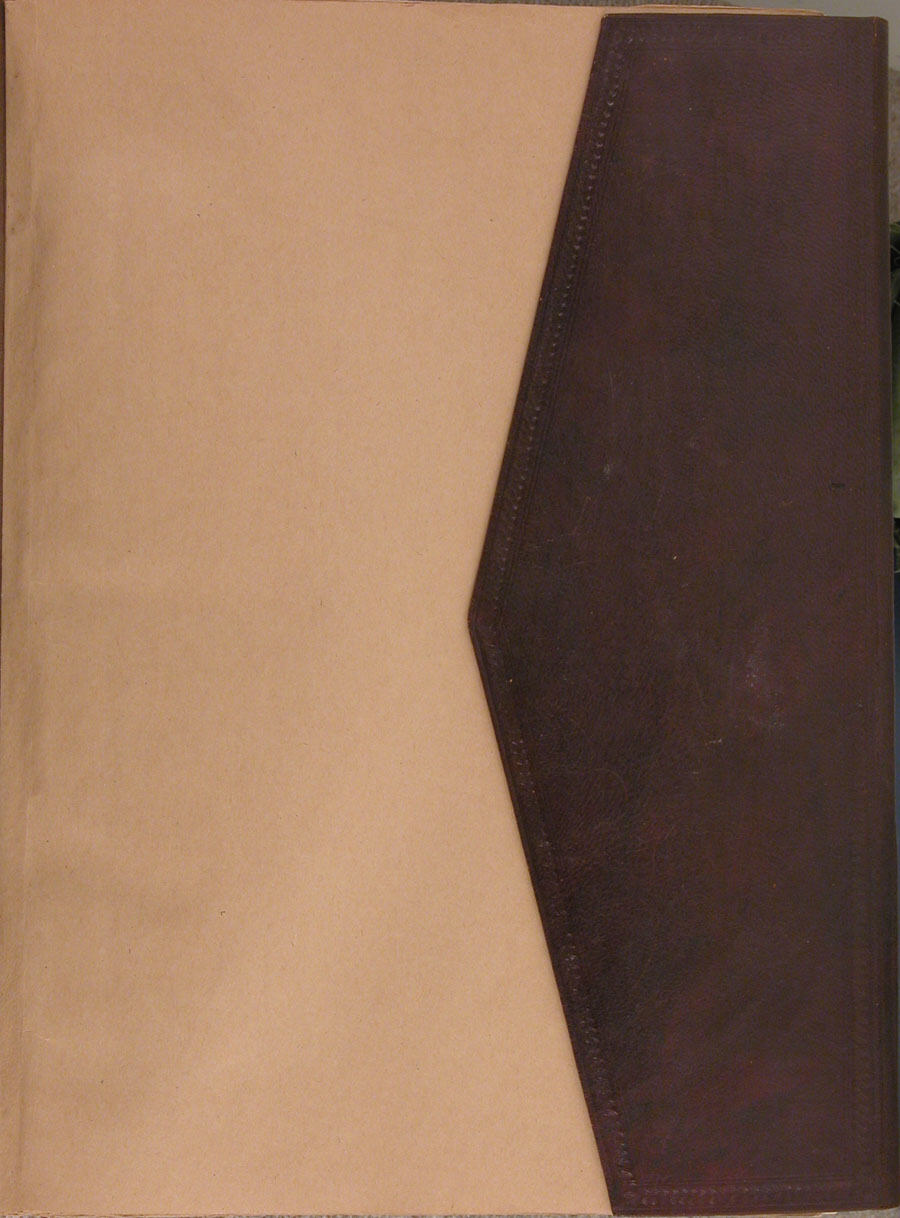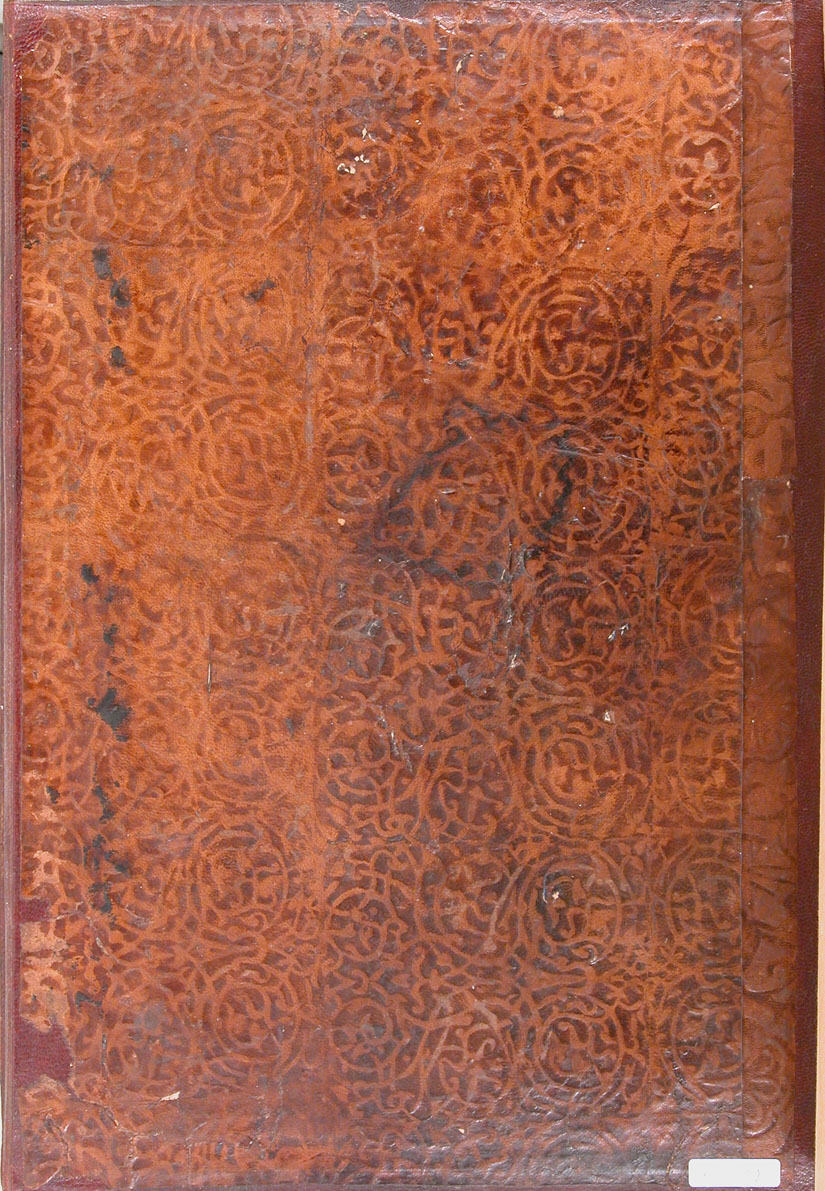Qur'an Manuscript
This Qur’an has been composed in large muhaqqaq and smaller rihani scripts, a pairing which is often seen together, especially in Qur’ans even larger than this one. On some of the more elaborately colored and gilded pages, the calligrapher has also included a highly geometric form of kufic script, written in white, to identify the sura. Large gilded medallions in the page margins indicate the chapter divisions, while smaller roundels interspersed in the text are verse markers.
The design of the cover, medallions and margins, and corner pieces serve to attribute this Qur’an to Ottoman Turkey. In addition, this manuscript contains an inscription with the name Selcuk Hatun binti Aga Lacin, which may refer to either a daughter of Sultan Mehmet I (r.1413–21), or possibly one of the wives of Sultan Bayezid II (r.1481–1512).
Due to rights restrictions, this image cannot be enlarged, viewed at full screen, or downloaded.
This artwork is meant to be viewed from right to left. Scroll left to view more.



